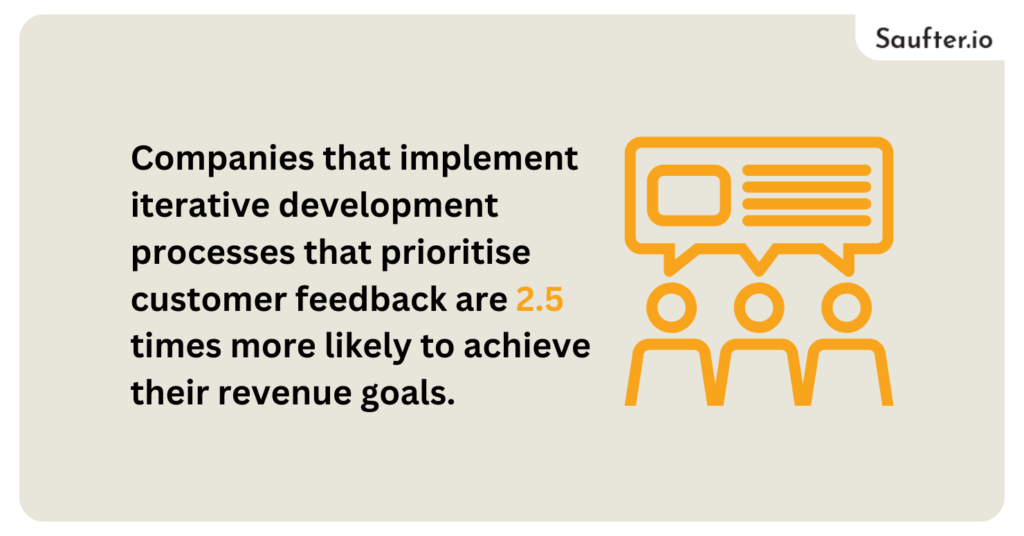Last Updated: December 2025
In today’s competitive landscape, SaaS growth opportunities can significantly enhance product-market fit, particularly through the conjoint analysis. Companies striving for growth must understand that only 10% of startups are successful each year and know what it takes to survive the odds of failing. That’s where conjoint analysis comes into play; applying this statistical technique can uncover insightful data that leads to significant SaaS growth opportunities.

How to Achieve Product-Market Fit
- Ensuring that a product meets the needs of its intended market while also being commercially viable.
- This requires businesses to balance customer expectations with their operational capabilities.
- A critical component in this balancing act is gathering accurate and actionable data, which is where conjoint analysis excels.
Overview of SaaS Growth Opportunities
- Significant Market Expansion: The SaaS industry is anticipated to experience substantial growth, primarily driven by innovations in artificial intelligence and specialised solutions tailored for various sectors.
- Focus on Digital Transformation: The increasing need for digital transformation is encouraging organisations to adopt cloud-based solutions that enhance operational efficiency and scalability, particularly in the rapidly growing Asia-Pacific region.
- Demand for Enhanced Integration: There is a growing interest in low-code development platforms and improved API connectivity, which facilitate better integration with existing business processes. This trend helps companies effectively manage their software investments and enhance product-market fit by employing analytical tools like conjoint analysis for informed decision-making.
What is Conjoint Analysis?
- It helps companies determine customer preferences by asking them to make trade-offs between different product features.
- This methodology reveals what aspects of a product are most important to potential customers and which combinations are most appealing.
- By leveraging these insights, companies can enhance their offerings, making them not only more attractive but also increasingly aligned with market demand.
Understanding Product-Market Fit
Product-market fit signifies that a product is not only desired by customers but also meets their needs remarkably well. It can be viewed as the sweet spot where the product resonates with customer expectations and market trends. Gaining insight into product-market fit can lead to reduced churn rates, increased sales, and higher overall customer satisfaction.
When a company successfully achieves PMF:
- It often experiences an upward trajectory in growth. Satisfied customers become brand advocates, recommending the product to peers, thus driving organic growth.
- Conversely, companies that fail to establish a strong PMF often struggle with customer retention and slow sales, leading to increased churn rates.
To determine SaaS growth opportunities and product-market fit, businesses often rely on customer feedback, usage data, and competitive analysis. However, these traditional methods may fall short in revealing nuanced customer preferences. Therefore, integrating advanced market research techniques, such as conjoint analysis, becomes essential for deeper insights into customer behaviour.
The Role of Conjoint Analysis
Conjoint analysis is a quantitative research method that helps to analyse the customer and find out what the product is preferred by the customer.
- In a controlled environment, businesses can stimulate customers by giving various choice preferences, which will help to get a clear insight about the likes and dislikes of customers.
- By understanding the customers’ preferences and using conjoined analysis, companies can make decisions about the products and marketing strategies.
Understanding the Mechanism of Conjoint Analysis
- This method involves surveys, which provide different product scenarios to the respondents, which lead them to choose different attributes.
- For example, in a SaaS product-related question, it involves various levels of service features, pricing, discounts, and others.
- By observing these, businesses can identify what the customers need and what their desirable pricing, food, and so on.
Moreover, conjoint analysis transforms subjective judgements into quantitative data, allowing for clearer decision-making. Bringing in this data-driven approach. Companies can identify not only the popular trends but also optimise product pricing.
Steps to Conduct Conjoint Analysis
1. Identify Critical Product Attributes
- Begin by determining which features of your product are likely to influence customer decisions. This involves extensive discussions with key stakeholders, including product managers, marketing teams, and directly with customers.
- Conduct qualitative research through interviews or focus groups to gather insights on which attributes are considered most valuable by potential users.
- Prioritise attributes based on their perceived importance to customers, ensuring the most impactful features are included in the analysis.
2. Generate a Choice-Based Conjoint (CBC) Survey
- Develop a CBC survey that presents respondents with various hypothetical product scenarios showcasing different combinations of features.
- Ensure that the scenarios are realistic and relevant to the target market, reflecting how customers would encounter the product in real-life situations.
- Carefully design the survey questions to guide respondents in making choices that mimic their actual purchasing behaviour, allowing for authentic preference revelation.
3. Distribute the Survey to a Targeted Audience.
- Utilise multiple channels (such as email, social media, and direct outreach) to distribute the survey to a representative sample of your target audience.
- Consider using targeted ads or incentives to encourage participation, ensuring a diverse range of responses that can provide comprehensive insights into customer preferences.
- Monitor response rates and adjust outreach strategies accordingly to maximise survey completion.
4. Statistical Analysis of Collected Data
- After the survey has closed, compile and clean the collected data to prepare it for analysis.
- Employ statistical techniques, such as regression analysis and market simulation models, to examine the preference patterns and identify which attributes are most valued by customers.
- Interpret the results to derive actionable insights, informing your product development team of essential features and optimal pricing strategies that align with consumer desires.
5. Communicate Findings to Inform Product Development
- Share the outcomes of the analysis with relevant departments, including product development, marketing, and sales, to ensure alignment across teams.
- Utilise the insights gained from the analysis to guide strategic decision-making regarding product feature enhancements, pricing adjustments, and targeted marketing campaigns.
- Implement a feedback loop by encouraging ongoing customer input to continuously refine the product and maintain alignment with market needs.
Analysing the Results
Once the survey ends, data is collected, and the next step involves analysing the data and identifying the significant trends and customer preferences. Statistical tools such as regression analysis can be applied to determine the impact and importance of individual attributes. This analysis reveals the customers’ preference and ranking of the product, but also about how they trade-off among various features.
Result and the Goal of the Saas Growth Opportunities Analysis
It highlights the must-have features that drive the customers to buy it. They should give priorities to customer expectations and match the needs of the customers. Additionally, companies can develop strategies over pricing and how much customers are willing to pay for the special attributes.
- The ultimate goal of conjoint analysis is to inform product development and marketing strategies based on real customer data.
- With these insights, organisations can refine product features, adjust pricing, and create targeted marketing campaigns that resonate with their customer base.
- This data-driven approach allows the company to make better product decisions that align with the trends of the market and match the customer needs.
Implementing Findings into Product Development
Incorporating the insights derived from conjoint analysis into the product development process is crucial for SaaS growth opportunities and optimising product-market fit. When designing or updating their products, companies should prioritise the most valued features identified during the analysis. This ensures that the product’s entry into the market will be successful, as it resonates well with the customers’ preferences.
Extending Insights to Marketing Strategies
Furthermore, insights should extend beyond product design to encompass marketing strategies.
- Messaging that highlights top features and benefits identified through conjoint analysis can enhance customer engagement.
- By tailoring marketing communication to reflect customer preferences, companies can strengthen their positioning in the marketplace.
Additionally, businesses should remain more open to feedback, which will enhance the success of the company. As the product development department does not stop once the product is produced, it evolves continuously. Regularly revisiting and conducting conjoint analysis can help companies stay in tune.
The Importance of Customer Engagement
While optimising product-market fit is critical, customer engagement plays a pivotal role in sustaining that fit over time. Companies must ensure that they effectively engage customers throughout their journey to foster satisfaction and loyalty. Engaged customers are more likely to provide valuable feedback, which can further inform product iterations.
- Implementing effective customer engagement strategies can also differentiate a brand in a saturated market.
- Businesses can cultivate relationships with the customer that extend beyond transactions.
- Builds trust and encourages customers to share their experiences and suggestions, contributing to continuous product improvement and SaaS growth opportunities.
Moreover, a strong customer engagement strategy can lead to the establishment of community among users. Companies can create forums or online spaces where users share insights. This community-building effort can lead to increased customer retention and brand advocacy.
The Continuous Process of Optimisation
Achieving product-market fit is not a one-time event; it requires continuous effort and responsiveness to market changes. Businesses must maintain an ongoing dialogue with their customers to stay ahead of their needs. By regularly employing strategies like conjoint analysis, companies can adapt their offerings and marketing strategies based on real-time feedback.
- By understanding the trends of society, business will grow widely.
- It helps them create innovative products that satisfy the customer’s needs.
- It helps them to predict the future market.
Fostering a Culture of Experimentation for Innovation and Growth
Furthermore, fostering a culture of experimentation within organisations encourages teams to explore new ideas and innovations. By aligning these explorations with insights gained through customer engagement, companies can craft products that are not just adequate but exceptional. This proactive mindset is essential for sustained growth and maintaining relevance in a fast-paced market.
Creating Customised Consumer Survey Questions
Creating customised consumer survey questions is essential for gathering insights that can effectively inform business decisions. A strategic approach ensures that the collected data is relevant and actionable for SaaS growth opportunities.
1. Define Clear Survey Objectives
- Identify the primary goals of your survey.
- Consider whether you want to assess customer satisfaction, product feature preferences, brand perception, or other factors.
- Clearly defined objectives help in crafting targeted and specific questions.
2. Craft Simple and Direct Questions
- Use straightforward language and avoid jargon to enhance clarity.
- Ensuring that questions are easy to understand improves the quality of responses and minimises misinterpretation.
3. Utilize a Variety of Question Types
Incorporate different formats, such as:
- Multiple-choice questions: facilitate quantitative analysis.
- Likert scale questions: Measure attitudes or perceptions based on a scale.
- Open-ended questions: Allow respondents to express their thoughts, providing richer qualitative insights.
- Organise questions logically, progressing from broad enquiries to specific ones to improve survey flow and completion rates.
4. Tailor Questions to the Target Demographic
- Ensure that questions resonate with the specific audience segment you are targeting.
- Ensuringuage and examples that are relevant to the demographic; for instance, technology-centric terminology for a younger audience encourages engagement and participation.
5. Pre-test the Survey
- Conduct a pre-test with a small, representative group before the broader rollout.
- Identify any confusing questions or technical issues and incorporate feedback to refine the survey.
- Pre-testing is crucial for enhancing the overall effectiveness and reliability of your survey.
6. Mastering Effective Survey Creation
The combination of understanding objectives, crafting relevant questions, using diverse formats, and considering audience preferences is essential for driving impactful decision-making within your organisation.
Having established a solid foundation for creating effective consumer surveys, we can now explore how the insights gathered can be further amplified through tools and strategies offered by Saufter.
Saufter: The Best Customer Engagement Platform

In the pursuit of enhanced customer engagement, Saufter stands out as a leading platform that improves the interaction between businesses and their customers. It provides a range of engagement tools designed to support effective communication across various channels.
Key Features:
- User Behaviour Tracking: It tracks the customer’s events, like their visit, purchase, and refund. It analyses the customer’s behaviour and helps the businesses target the customer with precision.
- Advanced Reporting and Analytics: Track the effectiveness of emails and use real-time analytics to make informed corrections.
- Weekly Ideas for Campaigns: To maintain the effectiveness and vibrancy of your email, get new data-driven ideas every week.
Conclusion

Hence, optimising product-market fit through methods like conjoint analysis allows companies to gain valuable insights into customer preferences. According to a study, companies that implement iterative development processes that prioritise customer feedback are 2.5 times more likely to achieve their revenue goals than those that don’t. By understanding what features drive customer decisions, businesses can create offerings ultimately leading to significant SaaS growth opportunities.
Incorporating effective customer engagement tools, such as Saufter, can further align product offerings with customer needs. This engagement fosters communication that builds trust and enhances the overall experience. By committing to ongoing refinement and customer-centric strategies, companies can secure their place in the competitive SaaS landscape for years to come.
















